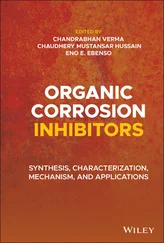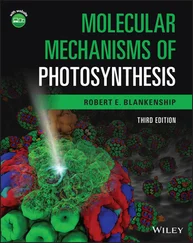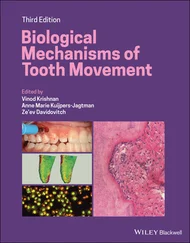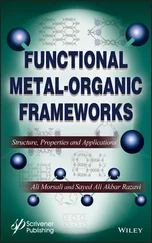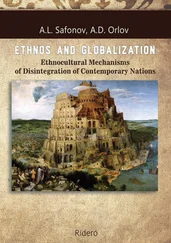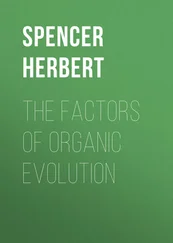2 Chapter 2 FIGURE 2.1 (a) Structure of and bonding in the methyl radical and (b) bondin... FIGURE 2.2 Molecular orbital model for the hyperconjugation effect in the et... FIGURE 2.3 Resonance stabilization for (a) the ethyl radical, (b) the isopro... FIGURE 2.4 Molecular orbitals in the allyl radical. FIGURE 2.5 Conjugation effect in the benzyl radical. FIGURE 2.6 Resonance stabilization for allyl (a) and benzyl radicals (b). FIGURE 2.7 Bond dissociation energies (BDEs) for HC≡C˙, C 6H 5˙, and H 2C=CH˙ r... FIGURE 2.8 Energy levels (BDE's—bond dissociation energies) for various radi... FIGURE 2.9 Mechanism for radical chlorination of methane. FIGURE 2.10 Nature of the transition states for the chain‐growth steps of ch... FIGURE 2.11 Reaction profiles for the chain‐growth steps of chlorination of ... FIGURE 2.12 Reaction profiles, transition states, and activation energies fo...FIGURE 2.13 (a) Overall mechanism for radical halogenation (substitution and...FIGURE 2.14 Thermal dissociation of (PhCOO) 2giving the Ph˙ radical.FIGURE 2.15 Mechanism for (PhCOO) 2initiated autoxidation of cumene (isoprop...FIGURE 2.16 The alkane C ─H bond activation by transition metal complex...FIGURE 2.17 The alkane C ─H bond activation by various transition metal...FIGURE 2.18 Mechanism for the methane C ─H bond activation by mercury(I...FIGURE 2.19 Structure of dichloro(η‐2‐{2,2′‐bipyrimidyl})platinum(II), denot...FIGURE 2.20 Mechanism for the (bpym)PtCl 2catalyzed functionalization of met...FIGURE 2.21 The proposed transition states for the hydrogen abstraction of t...FIGURE 2.22 Reactions of alkanes with elemental sulfur in triflic acid.FIGURE 2.23 Mechanism for the triflic acid catalyzed alkane C ─H bond a...FIGURE 2.24 The protonated nitronium NO 2H 2+dication and its reaction with m...FIGURE 2.25 Nitration of adamantane via a three‐center, two‐electron bond ca...FIGURE 2.26 Reactions of nitronium hexafluorophosphate with (a) ethane, (b) ...FIGURE 2.27 Cytochrome P‐450 catalyzed alkane C ─H bond oxidative funct...FIGURE 2.28 Structure of active site of methane monooxygenase (MMO) and mech...
3 Chapter 3FIGURE 3.1 Mechanism and regioselectivity for electrophilic addition of hydr...FIGURE 3.2 Reaction profiles for electrophilic addition of hydrogen chloride...FIGURE 3.3 Regioselectivity for electrophilic addition of hydrogen bromide t...FIGURE 3.4 Mechanism and stereochemistry for electrophilic addition of hydro...FIGURE 3.5 Mechanism, regiochemistry, and stereochemistry for electrophilic ...FIGURE 3.6 Stereoselectivity of electrophilic addition of hydrogen iodide to...FIGURE 3.7 The acid‐catalyzed hydration of various alkenes.FIGURE 3.8 Mechanism for the acid‐catalyzed hydration of 1‐methoxycyclohexen...FIGURE 3.9 Structure of mercury(II) acetate.FIGURE 3.10 Mechanism and regioselectivity for mercury(II) acetate catalyzed...FIGURE 3.11 The acid‐catalyzed electrophilic addition of alcohols to various...FIGURE 3.12 Mechanism for toluenesulfonic acid catalyzed electrophilic addit...FIGURE 3.13 Aluminum chloride catalyzed addition of benzene to cyclohexene....FIGURE 3.14 Acid catalyzed reaction of 2‐methylpropene with isobutane effect...FIGURE 3.15 The AlCl 3‐catalyzed electrophilic addition of deuterated PhCD 2Cl...FIGURE 3.16 Electrophilic addition of hydrogen chloride to 1,3‐butadiene. (a...FIGURE 3.17 Radical initiated Non‐Markovnikov addition of hydrogen bromide t...FIGURE 3.18 Structure of and bonding in diborane and borane. The three‐cente...FIGURE 3.19 Mechanism for hydroboration of alkenes: Concerted, non‐Markovnik...FIGURE 3.20 Mechanism, regiochemistry, and stereochemistry for hydroboration...FIGURE 3.21 Synthesis of 9‐borabicyclo[3.3.1]nonane (9‐BBN).FIGURE 3.22 Hydroboration of a‐pinene by diborane (via BH 3) in THF.FIGURE 3.23 Comparison of regioselectivity for alkene hydroborations effecte...FIGURE 3.24 Stereoselectivity for hydroboration reactions of ( R )‐ and ( S )‐3‐...FIGURE 3.25 Mechanism for transition‐metal catalyzed heterogeneous hydrogena...FIGURE 3.26 The MO diagram for the formation of the H─M─H bonds from H 2and ...FIGURE 3.27 Palladium catalyzed hydrogenation of 2,3‐diphenyl‐2‐butenes in (FIGURE 3.28 A hypothesized hydrogenated fat (saturated) made by transition‐m...FIGURE 3.29 Mechanism and transition states for halogenation of alkene in di...FIGURE 3.30 Mechanism and stereochemistry for bromination of cyclohexene in ...FIGURE 3.31 Regioselectivity and stereoselectivity for bromination of ( Z )‐1‐...FIGURE 3.32 Bromination of ( R )‐4‐ tert ‐butylcyclohexene giving stereospecific...FIGURE 3.33 Reactions of cyclohexene with elemental bromine in water (a) and...FIGURE 3.34 Regiochemistry and stereochemistry for reactions of 1‐methylcycl...
4 Chapter 4FIGURE 4.1 Prototype for electrophilic cycloaddition of an alkene forming a ...FIGURE 4.2 Epoxidation of an alkene by a percarboxylic acid following a conc...FIGURE 4.3 Examples of alkene epxidation reactions.FIGURE 4.4 Mechanism for cycloaddition of dichlorocarbene (CCl 2) to an alken...FIGURE 4.5 Stereochemistry for cycloaddition of dichlorocarbene (CCl 2) to al...FIGURE 4.6 Removal of chloro groups (defunctionalization) from 1,1‐dicloropr...FIGURE 4.7 Stepwise radical mechanism for cycloaddition of the triplet diphe...FIGURE 4.8 Mechanism and stereochemistry for cycloadditions of a carbenoid t...FIGURE 4.9 π molecular orbital diagram of ethylene.FIGURE 4.10 Possible frontier molecular orbital (FMO) interactions between t...FIGURE 4.11 HOMO–LUMO electronic transition in ethylene.FIGURE 4.12 Possible frontier molecular orbital (FMO) interactions between a...FIGURE 4.13 Mechanism and stereochemistry for photochemical cycloaddition of...FIGURE 4.14 Mechanism and stereochemistry for photochemical cycloaddition of...FIGURE 4.15 Frontier molecular orbital (FMO) interactions involved in therma...FIGURE 4.16 Effect of an electron‐withdrawing group on the energy level of L...FIGURE 4.17 Examples of Diels–Alder reactions of 1,3‐butadiene derivatives w...FIGURE 4.18 Regiochemistry for Diels–Alder reaction.FIGURE 4.19 Diels–Alder reaction of 1,3‐cyclopentdiene with ethylene giving ...FIGURE 4.20 Diels–Alder reactions of the C=N containing t ‐butyl 2‐azidoacryl...FIGURE 4.21 Diels–Alder reactions of 1,3‐cyclopentadiene with 2,3‐dicyano‐ p ‐...FIGURE 4.22 Diels–Alder reactions for larger cyclic systems.FIGURE 4.23 Regioselectivity and stereoselectivity for Diels–Alder reactions...FIGURE 4.24 Synthesis of tofogliflozin by a 6π intramolecular diene‐yne Diel...FIGURE 4.25 Frontier molecular orbital (FMO) interactions involved in therma...FIGURE 4.26 Overall mechanism for oxidation of an alkene to two carbonyl gro...FIGURE 4.27 Cycloaddition reaction of an alkene to diazomethane.FIGURE 4.28 (a) The in‐plane sideway overlaps of p orbitals in two perpendic...FIGURE 4.29 Thermally symmetry‐allowed cycloadditions of the dithionitronium...FIGURE 4.30 Mechanism for cycloaddition of an alkene to an alkene‐NS 2 +cyclo...FIGURE 4.31 Stereochemistry of cycloadditions of alkenes to alkene‐NS 2 +cycl...FIGURE 4.32 Cycloaddition of [S=N=S] +to 2,3‐dimethyl‐2‐butene.FIGURE 4.33 Thermally symmetry‐allowed cycloadditions of [S=N=S] +to alkynes...FIGURE 4.34 Mechanism for intramolecular ring‐closure (cyclization) of 1,3,5...FIGURE 4.35 Mechanism for the Cope rearrangement of deuterium isotope‐labele...FIGURE 4.36 Photochemical ring‐closure of 1,3‐butadiene to cyclobutene.FIGURE 4.37 The 4π‐cycloaddition between the N=N bonds. (a) Pathway for a re...FIGURE 4.38 The 4π‐cycloaddition of C 60with 2,5‐dimethyl‐2,4‐hexadiene.FIGURE 4.39 The energetics of FMOs for the 4 π 1,3‐cyclopentadiene and 2 π e...FIGURE 4.40 Comparison of the 6 π Diels–Alder cycloadditions of a 1,3‐dipole...FIGURE 4.41 The energetics of FMOs for a 4 π 1,3‐dipole and the 2 π styrene ...FIGURE 4.42 The FMO interactions for the cycloaddition reaction of quadricyc...FIGURE 4.43 Chemical synthesis of Vitamin D 2via the ring‐opening process of...FIGURE 4.44 The ribosome‐catalyzed formation of the peptide bond (C–N) in bi...
Читать дальше


